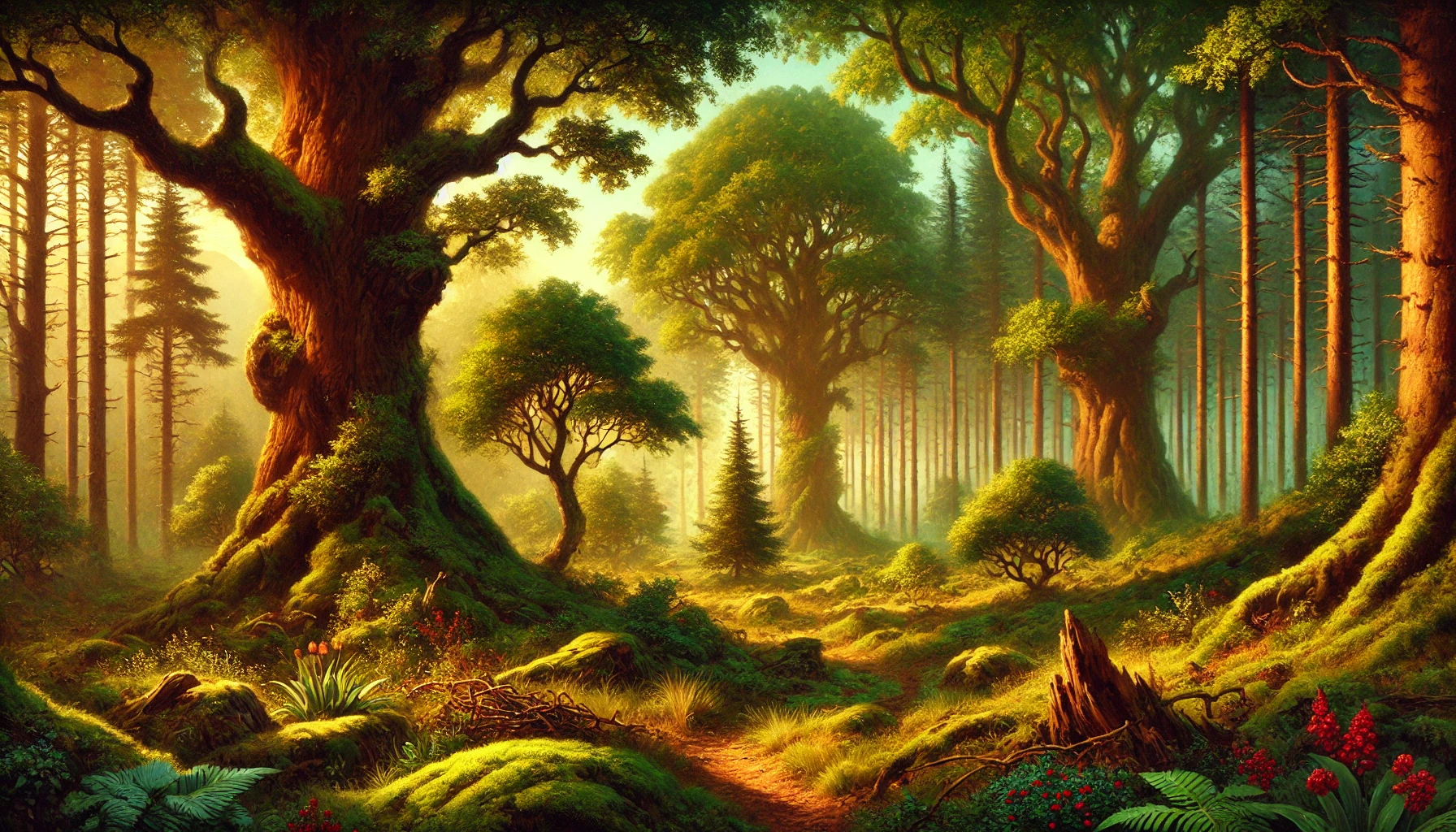Lushleaf Vale
The Green Ribbon of the East
Running parallel to the Eorlwaters for over 600 kilometers, Lushleaf Vale is less a single forest and more a wandering procession of wooded glades, dense copses, and open groves, woven together by time and terrain. Rarely more than 100 kilometers wide, the Vale stretches like a green ribbon between river and plain, skirting the edge of the Moorlight Meadows as it moves northward.
In the southern reaches, the forest is full and vibrant—towering hardwoods stand close, their broad canopies creating sheltered corridors of filtered sunlight. Wild berries and edible roots thrive here, and hunters speak of plentiful game. But as one travels north, the woods begin to loosen their grip on the land. Trees stand farther apart, the underbrush grows thinner, and wide clearings begin to dot the landscape, revealing windswept grass and moss-covered stone. By the time the Vale reaches its northern end, it more closely resembles woodland pasture than true forest.
Despite its fragmented nature, Lushleaf Vale is considered one of the most productive hunting grounds in the eastern temperate belt. It is crisscrossed with informal game trails and footpaths—some maintained by hunter lodges, others carved by centuries of quiet passage. Foraging is common in the southern reaches, while seasonal hunts are a mainstay along the midsection.
Lushleaf Vale is not known for myths or mysteries. Its value lies in its familiarity—an accessible, ever-changing landscape that has quietly fed and sheltered generations. It may not boast the old magic of the deeper forests, but it has its own rhythm. And it still listens.
“The Vale has been generous, but no forest gives without end. Take only what you need. Leave enough for tomorrow’s hunt.”
Signs of Strain
The deer don’t come down like they used to. Midsection herds are smaller. Ground birds have moved farther east. Might be the weather—or too many eager hands on the same ground.— From the ledger of Huntmaster Jerek Malen


Comments